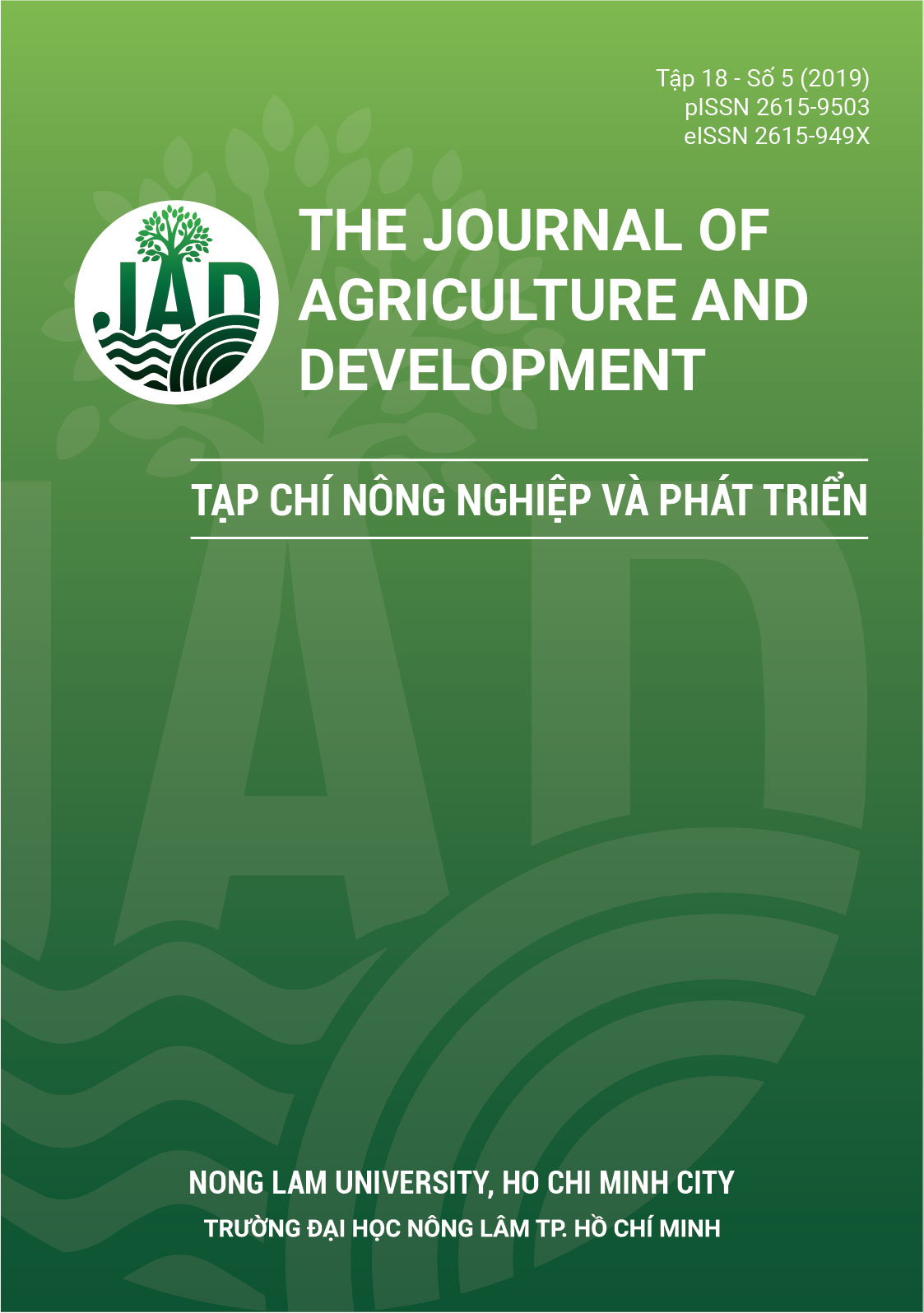Nong Lam University students' perceptions of corporate social responsibility: A case study
Main Article Content
Abstract
This study was conducted to assess students' perceptions of corporate social responsibility (CSR) and the impacts of those perceptions on their thinking and behavior. Structural equation modelling (SEM) was used to examine the proposed correlations by analysing the data collected from 787 students at Nong Lam University. Results showed that there were positive correlations from relatives, social activity participation, demographics, and self perception of students' perception of CSR. Besides, we also found that perception would positively affect students' thinking and behavior.
Article Details
References
Ali, I., Rehman, K. U., Yilmaz, A. K., Nazir, S., & Ali, J. F. (2010). Effects of corporate social responsibility on consumer retention in the cellular industry of Pakistan. African Journal of Business Management 4(4), 475-485. https://doi.org/10.5897/AJBM.9000245
Anderson, J. C., & Gerbing, D. W. (1988). Structural equation modelling in practice: A review and recommended two-step approach. Psychological Bulletin 103(3), 411-423. https://doi.org/10.1037/0033-2909.103.3.411
Bailey, G., & Gayle, N. (2003). Social theory: Essential readings. Toronto, Canada: Oxford University Press.
Balabanis, G., Phillips, H. C., & Lyall, J. (1998). Corporate social responsibility and economic performance in the top British companies: are they linked? European Business Review 98(1), 25-44. https://doi.org/10.1108/09555349810195529
Bem, D. J. (1972). Self-perception theory. In Advances in experimental social psychology (Vol. 6, 1-62). Massachusetts, USA: Academic Press.
Bem, D. J. (1967). Self-perception: An alternative interpretation of cognitive dissonance phenomena. Psychological Review 74(3), 183-200. https://doi.org/10.1037/h0024835
Berle, A., & Means, G. (1932). Private property and the modern corporation. New York, USA: Macmillan.
Bui, T. A., & Pham, H. T. (2011). Organizational Behavioral Curriculum (1st ed.). Ha Noi, Vietnam: National Economics University Press.
Burcea, M., & Marinescu, P. (2011). Students’ Perceptions on Corporate Social Responsibility at the Academic Level. Case Study: The Faculty of Administration and Business, University of Bucharest. Amfiteatru Economic Journal 13(29), 207-220.
Carroll, A. B. (1991). The pyramid of corporate social responsibility: Toward the moral management of organizational stakeholders. Business Horizons 34(4), 39-48. https://doi.org/10.1016/0007-6813(91)90005-G
Dahlsrud, A. (2008). How corporate social responsibility is defined: an analysis of 37 definitions. Corporate Social Responsibility and Environmental Management 15(1), 1-13. https://doi.org/10.1002/csr.132
Efron, R. (1969). What is perception?. In Cohen, R. S., & Wartofsky, M. W. (Eds.) .Proceedings of the Boston Colloquium for the Philosophy of Science 1966/1968 (137-173). Dordrecht, Netherlands: Springer. https://doi.org/10.1007/978-94-010-3378-7_4
Fitzpatrick, J. (2013). Business students’ perceptions of corporate social responsibility. College Student Journal 47(1), 86-95.
Le, N., & Nguyen, T. T. M. (2016). University personality, external prestige and university reputation on supporting the attitude of university student. Journal of Agricultural Science and Technology 2, 106-114.
Luo, X., & Bhattacharya, C. B. (2006). Corporate social responsibility, customer satisfaction, and market value. Journal of Marketing 70(4), 1-18. https://doi.org/10.1509/jmkg.70.4.001
Marin, L., Ruiz, S., & Rubio, A. (2009). The role of identity salience in the effects of corporate social responsibility on consumer behavior. Journal of Business Ethics 84(1), 65-78. https://doi.org/10.1007/s10551-008-9673-8
McShane, S. L., & Von Glinow, M. A. (2003). The employment relationship and career dynamics. Organizational behavior: Emerging realities for the workplace revolution (International ed., 552-555). New York, America: McGraw-Hill Education.
Nguyen, H. D., Tran, K. T., & Le, X. T. T. (2014). CSR from the perception of university students. Journal of Science, Ho Chi Minh City Open University 5(38), 28-
40.
Nguyen, T. N. (2010). Linking human resource management with CSR. Ha Noi National University Journal of Science, Economics and Business (26), 232-238.
Nunnally, J. C., & Bernstein, I. H. (1994). Psychological theory (3rd ed.). New York, USA: MacGraw-Hill.
Sweeney, L. (2009). A study of the current practice of corporate social responsibility (CSR) and an examination of the relationship between CSR and financial performance using structural equation modelling (SEM) (Unpublished doctoral dissertation). Technological University, Dublin, Ireland.
Teixeira, A., Ferreira, M. R., Correia, A., & Lima, V. (2018). Students’ perceptions of corporate social responsibility: evidence from a Portuguese higher education institution. International Review on Public and Nonprofit Marketing 15(2), 235-252. https://doi.org/10.1007/s12208-018-0199-1
Thøger Christensen, L., Fuat F rat, A., & Torp, S. (2008). The organisation of integrated communications: toward flexible integration. European Journal of Marketing 42(3/4), 423-452. https://doi.org/10.1108/03090560810853002








